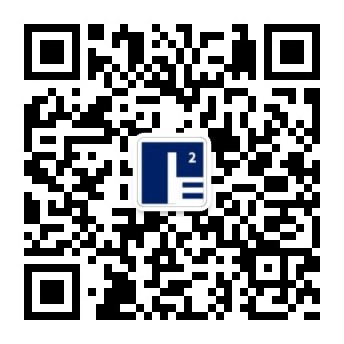Integrated Intelligent Energy ›› 2023, Vol. 45 ›› Issue (8): 72-79.doi: 10.3969/j.issn.2097-0706.2023.08.009
• Low-carbon Technical Economy • Previous Articles Next Articles
LI Bohang( ), LI Hongzhong*(
), LI Hongzhong*( ), ZHANG Minyuan(
), ZHANG Minyuan( )
)
Received:2023-04-28
Revised:2023-07-21
Published:2023-08-25
Supported by:CLC Number:
LI Bohang, LI Hongzhong, ZHANG Minyuan. Low-carbon economic dispatch of integrated energy systems considering load characteristics[J]. Integrated Intelligent Energy, 2023, 45(8): 72-79.
Add to citation manager EndNote|Ris|BibTeX
URL: https://www.hdpower.net/EN/10.3969/j.issn.2097-0706.2023.08.009
| [1] | 汤广福, 周静, 庞辉, 等. 能源安全格局下新型电力系统发展战略框架[J]. 中国工程科学, 2023, 25(2):79-88. |
|
TANG Guangfu, ZHOU Jing, PANG Hui, et al. Strategic framework for new electric power system development under the energy security pattern[J]. Strategic Study of CAE, 2023, 25(2):79-88.
doi: 10.15302/J-SSCAE-2023.01.003 |
|
| [2] | 程浩忠, 胡枭, 王莉, 等. 区域综合能源系统规划研究综述[J]. 电力系统自动化, 2019, 43(7):2-13. |
| CHENG Haozhong, HU Xiao, WANG Li, et al. Review on research of regional integrated energy system planning[J]. Automation of Electric Power Systems, 2019, 43(7):2-13. | |
| [3] | 黎静华, 朱梦姝, 陆悦江, 等. 综合能源系统优化调度综述[J]. 电网技术, 2021, 45(6):2256-2272. |
| LI Jinghua, ZHU Mengshu, LU Yuejiang, et al. Review on optimal scheduling of integrated energy systems[J]. Power System Technology, 2021, 45(6):2256-2272. | |
| [4] | 王森, 张照彦, 袁玉宝, 等. 提高新能源消纳的电-热综合能源系统日前优化调度策略[J]. 热力发电, 2022, 51(7):36-45. |
| WANG Sen, ZHANG Zhaoyan, YUAN Yubao, et al. Day-ahead scheduling strategy optimization of electric-thermal integrated energy system for improvement of new energy consumption[J]. Thermal Power Generation, 2022, 51(7):36-45. | |
| [5] | 卢志刚, 杨宇, 耿丽君, 等. 基于Benders分解法的电热综合能源系统低碳经济调度[J]. 中国电机工程学报, 2018, 38(7):1922-1934,2208. |
| LU Zhigang, YANG Yu, GENG Lijun, et al. Low-carbon economic dispatch of the integrated electrical and heating systems based on Benders decomposition[J]. Proceedings of the CSEE, 2018, 38(7):1922-1934,2208. | |
| [6] | 张大海, 贠韫韵, 王小君, 等. 考虑广义储能及光热电站的电热气互联综合能源系统经济调度[J]. 电力系统自动化, 2021, 45(19):33-42. |
| ZHANG Dahai, YUAN Yunyun, WANG Xiaojun, et al. Economic dispatch of integrated electricity-heat-gas energy system considering generalized energy storage and concentrating solar power plant[J]. Automation of Electric Power Systems, 2021, 45(19):33-42. | |
| [7] | 颜宁, 马广超, 李相俊, 等. 考虑跨季节性储能的园区综合能源系统低碳经济调度方法[J/OL]. 高电压技术:1-12(2023-07-13)[2023-07-20]. http://kns.cnki.net/kcms/detail/42.1239.TM.20230713.1654.003.html. |
| YAN Ning, MA Guangchao, LI Xiangjun, et al. Low-carbon economic dispatch method of park integrated energy system considering cross-seasonal energy storage[J/OL]. High Voltage Engineering:1-12(2023-07-13)[2023-07-20]. http://kns.cnki.net/kcms/detail/42.1239.TM.20230713.1654.003.html. | |
| [8] | 王浩, 袁至, 李骥, 等. 考虑综合需求响应的含光热电站的综合能源系统低碳优化调度[J]. 现代电子技术, 2023, 46(14):107-114. |
| WANG Hao, YUAN Zhi, LI Ji, et al. Low-carbon optimal scheduling of integrated energy system with photo-thermal power station considering comprehensive demand response[J]. Modern Electronics Technique, 2023, 46(14):107-114. | |
| [9] | 吕智林, 易佳奇, 刘泉, 等. 含氢能利用和需求响应的综合能源系统低碳优化[J]. 电力系统及其自动化学报, 2023, 35(7):10-19. |
| LV Zhilin, YI Jiaqi, LIU Quan, et al. Low-carbon optimization of integrated energy system with hydrogen energy utilization and demand response[J]. Proceedings of the CSU-EPSA, 2023, 35(7):10-19. | |
| [10] | 李鹏, 吴迪凡, 李雨薇, 等. 基于综合需求响应和主从博弈的多微网综合能源系统优化调度策略[J]. 中国电机工程学报, 2021, 41(4):1307-1321,1538. |
| LI Peng, WU Difan, LI Yuwei, et al. Optimal dispatch of multi-microgrids integrated energy system based on integrated demand response and stackelberg game[J]. Proceedings of the CSEE, 2021, 41(4):1307-1321,1538. | |
| [11] | 王凯旋, 张玉敏, 吉兴全, 等. 计及柔性电负荷的综合能源系统规划[J]. 安徽大学学报(自然科学版), 2022, 46(6):67-75. |
| WANG Kaixuan, ZHANG Yumin, JI Xingquan, et al. Integrated energy system planning considering flexible electrical loads[J]. Journal of Anhui University(Natural Sciences), 2022, 46(6):67-75. | |
| [12] | 李欣, 李涵文, 陈德秋, 等. 储液式CCS耦合P2G的综合能源系统低碳经济调度[J/OL]. 电力系统及其自动化学报:1-8(2023-07-13)[2023-07-20].http://doi.org.shiep.vpn358.com/10.19635/j.cnki.csu-epsa.001301. |
| LI Xin, LI Hanwen, CHEN Deqiu, et al. Low carbon economic dispatch of integrated energy system with coupling solvent-storaged CCS and P2G[J/OL]. Proceedings of the CSU-EPSA:1-8(2023-07-13)[2023-07-20].http://doi.org.shiep.vpn358.com/10.19635/j.cnki.csu-epsa.001301. | |
| [13] | 靳瑞强, 马广昭, 周喜超. 考虑柔性负荷的电-气综合能源系统低碳经济调度方法[J]. 工业加热, 2022, 51(5):36-40. |
| JING Ruiqiang, MA Guangzhao, ZHOU Xichao. Low carbon economic dispatch method of electricity gas integrated energy system considering flexible load[J]. Industrial Heating, 2022, 51(5):36-40. | |
| [14] | XIA Y, GE H, HAO S, et al. Low carbon operation of integrated energy systems considering electric and thermal flexible loads[C]//2022 IEEE 3rd China International Youth Conference on Electrical Engineering (CIYCEE). IEEE, 2022: 1-5. |
| [15] | 刘蓉晖, 李子林, 杨秀, 等. 考虑用户侧柔性负荷的社区综合能源系统日前优化调度[J]. 太阳能学报, 2019, 40(10):2842-2850. |
| LIU Ronghui, LI Zilin, YANG Xiu, et al. Optimal dispatch of community integrated energy system considering user-side flexible load[J]. Acta Energiae Solaris Sinica, 2019, 40(10):2842-2850. | |
| [16] | LIN X W, TSAY W D, YOU X F. Determinants analysis of the carbon trading market[C]//2020 IEEE 2nd Eurasia Conference on Biomedical Engineering, Healthcare and Sustainability (ECBIOS). IEEE, 2020: 193-196. |
| [17] |
LU Z, BAI L, WANG J, et al. Peer-to-peer joint electricity and carbon trading based on carbon-aware distribution locational marginal pricing[J]. IEEE transactions on power systems, 2022, 38(1): 835-852.
doi: 10.1109/TPWRS.2022.3167780 |
| [18] | 薛开阳, 楚瀛, 凌梓, 等. 考虑柔性负荷的综合能源系统低碳经济优化调度[J]. 可再生能源, 2019, 37(8):1206-1213. |
| XUE Kaiyang, CHU Ying, LING Zi, et al. Low-carbon economic optimal dispatch of integrated energy system considering flexible load[J]. Renewable Energy Resources, 2019, 37(8):1206-1213. | |
| [19] | 崔杨, 陈志, 严干贵, 等. 基于含储热热电联产机组与电锅炉的弃风消纳协调调度模型[J]. 中国电机工程学报, 2016, 36(15):4072-4081. |
| CUI Yang, CHEN Zhi, YAN Gangui, et al. Coordinated wind power accommodating dispatch model based on electric boiler and CHP with thermal energy storage[J]. Proceedings of the CSEE, 2016, 36(15):4072-4081. | |
| [20] | 尹晨旭, 朱刘柱, 项超, 等. 考虑氢能交互转换的综合能源微网协调调度方法[J]. 中国电力, 2020, 53(10):88-95,148. |
| YIN Chenxu, ZHU Liuzhu, XIANG Chao, et al. Coordinated dispatch method for integrated microgrid energy system considering interactive hydrogen conversion[J]. Electric Power, 2020, 53(10):88-95,148. | |
| [21] | 郭尊, 李庚银, 周明. 计及碳交易机制的电-气联合系统快速动态鲁棒优化运行[J]. 电网技术, 2020, 44(4):1220-1228. |
| GUO Zun, LI Gengyin, ZHOU Ming. Fast and dynamic robust optimization of integrated electricity-gas system operation with carbon trading[J]. Power System Technology, 2020, 44(4):1220-1228. | |
| [22] | 许周, 孙永辉, 谢东亮, 等. 计及电/热柔性负荷的区域综合能源系统储能优化配置[J]. 电力系统自动化, 2020, 44(2):53-59. |
| XU Zhou, SUN Yonghui, XIE Dongliang, et al. Optimal configuration of energy storage for integrated region energy system considering power/thermal flexible load[J]. Automation of Electric Power Systems, 2020, 44(2):53-59. | |
| [23] |
王晓海, 徐静静, 胡永锋, 等. 新形势下发电企业在综合能源服务领域的业务分析[J]. 综合智慧能源, 2022, 44(3):9-16.
doi: 10.3969/j.issn.2097-0706.2022.03.002 |
|
WANG Xiaohai, XU Jingjing, HU Yongfeng, et al. Business analysis on integrated energy services of power generation enterprises under the new circumstances[J]. Integrated Intelligent Energy, 2022, 44(3):9-16.
doi: 10.3969/j.issn.2097-0706.2022.03.002 |
| [1] | DENG Zhenyu, WANG Rukang, XU Gang, YUN Kun, WANG Ying. Current status of fault diagnosis for CHP units in integrated energy systems [J]. Integrated Intelligent Energy, 2024, 46(8): 67-76. |
| [2] | WANG Jun, TIAN Hao, ZHAO Ergang, SHU Zhan, WAN Zijing. Low-carbon operation control on park-level integrated energy systems considering shared energy storage devices for electric vehicles [J]. Integrated Intelligent Energy, 2024, 46(6): 16-26. |
| [3] | GONG Gangjun, WANG Luyao, CHANG Zhuoyue, LIU Xu, XING Huidi. Security protection for integrated energy cyber physical systems based on energy hubs [J]. Integrated Intelligent Energy, 2024, 46(5): 65-72. |
| [4] | LI Yun, ZHOU Shijie, HU Zheqian, LIANG Junyuan, XIAO Leiming. Optimal scheduling of integrated energy systems based on NSGA-Ⅱ-WPA [J]. Integrated Intelligent Energy, 2024, 46(4): 1-9. |
| [5] | SHI Mingming, ZHU Rui, LIU Ruihuang. Joint economic dispatch of an AC/DC power system and a heating system [J]. Integrated Intelligent Energy, 2024, 46(4): 10-16. |
| [6] | CHEN Yong, XIAO Leiming, WANG Jingnan, WU Jian. Capacity planning method with high reliability for integrated energy systems with low-carbon emissions based on scenario expansion [J]. Integrated Intelligent Energy, 2024, 46(4): 24-33. |
| [7] | WANG Jinglong, WANG Hui, YANG Ye, ZHENG Yingying. Collaborative optimization method for power-heat-gas integrated energy systems considering multiple uncertainties [J]. Integrated Intelligent Energy, 2024, 46(4): 42-51. |
| [8] | ZHONG Yongjie, WANG Zidong, ZUO Jianxun, WANG Changqing, LI Jingxia, JI Ling. Economic dispatch of multi-energy complementary systems considering multi-period scales and regional stratification [J]. Integrated Intelligent Energy, 2024, 46(4): 52-59. |
| [9] | XU Cong, HU Yongfeng, ZHANG Aiping, YOU Changfu. Multi-load day-ahead and intra-day forecasting for integrated energy systems based on feature screening [J]. Integrated Intelligent Energy, 2024, 46(3): 45-53. |
| [10] | ZHANG Li, JIN Li, REN Juguang, LIU Xiaobing. Research on load regulation strategy of integrated energy systems considering meteorological factors and time-of-use tariffs [J]. Integrated Intelligent Energy, 2024, 46(1): 18-27. |
| [11] | WANG Yongzhen, HAN Yibo, HAN Kai, HAN Juntao, SONG Kuo, ZHANG Lanlan. Researches on data center integrated energy systems based on knowledge graph [J]. Integrated Intelligent Energy, 2023, 45(7): 1-10. |
| [12] | CAO Zilin, WANG Wenjing, ZHAO Wei, KANG Ligai, GAO Xiaofeng, YANG Yang, WANG Jinzhu. Research on optimal scheduling of distributed integrated energy systems in load-intensive areas considering demand response [J]. Integrated Intelligent Energy, 2023, 45(7): 11-21. |
| [13] | LI Yizhe, WANG Dan, JIA Hongjie, ZHOU Tianshuo, CAO Yitao, ZHANG Shuai, LIU Jiawei. Diverse modeling methods for energy hubs in integrated energy systems and their typical applications [J]. Integrated Intelligent Energy, 2023, 45(7): 22-29. |
| [14] | BAO Yixin, XU Luoyun, YANG Qiang. Optimized control method for flexible load of a building complex based on MADDPG reinforcement learning [J]. Integrated Intelligent Energy, 2023, 45(7): 61-69. |
| [15] | JIN Li, ZHANG Li, TANG Yang, TANG Qiao, REN Juguang, YANG Kun, LIU Xiaobing. Short-term prediction on integrated energy loads considering temperature-humidity index and coupling characteristics [J]. Integrated Intelligent Energy, 2023, 45(7): 70-77. |
| Viewed | ||||||
|
Full text |
|
|||||
|
Abstract |
|
|||||

